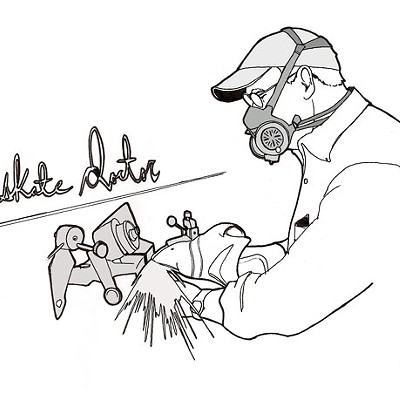Joan Parks-Hubley is my hero.
It’s not a title that usually goes along with being a government employee. But Parks-Hubley’s got my nod.
The Healthy Workplace program coordinator with Nova Scotia’s Public Service Commission is regularly bolting out the office door. It’s not quite in the spirit of “take this job and shove it,” but I’m betting it feels almost as liberating.
Parks-Hubley is spearheading Take Back the Lunch Break, encouraging provincial employees to step away from their desks for a break at least three times per week. Sounds crazy, I know, when some people are weighing the benefits of adult diapers so we can work through bathroom breaks to keep up the pace.
You might have read in the Globe and Mail March 29 about the dangers of scarfing sloppy subs over your keyboard—researchers found the average desktop is home to 400 times more bacteria than the office toilet seat. But Parks-Hubley’s interested in more than germs.
“Take Back the Lunch Break,” she explains, “is basically government’s encouragement to take a healthy break so that can reenergize for the afternoon.”
The challenge—borrowed with blessings from the University of Toronto—launched in early March with posters, a government-wide email and postcards delivered to every provincial employee.
Were desk jockeys the province over just waiting for an invitation to lunch?
Yes, actually.
It’s an “unwritten rule, almost,” says Parks-Hubley. “A lot of employees felt that if their managers didn’t take a lunch break they probably shouldn’t take one either.”
Colleen Gareau works at the PSC too. “A lot of us tend to work through lunch so we don’t get behind,” she says.
Both Gareau and Parks-Hubley make it a habit to go to lunch. It makes them feel good.
That’s nice, but Take Back the Lunch Break and other programs aimed at making provincial staff healthier have bottom-line impact too: less absenteeism, lower health treatment costs and reduced drug claims, for starters.
“There are a lot of studies that speak to productivity—the keystroke speed of people doing data entry decreases without a midday break—but to mental health as well,” Gareau says. “There are studies that speak to stress and energy.”
Healthy workplace committees have been set up by employees in nearly every provincial department and each one has its own programs, like walking groups. Parks-Hubley and Gareau’s Public Service Commission, for its part, has a nearly completed resource manual for healthy eating at work, a caregiver-in-the-workplace support pilot and lunch-and-learn sessions where people can find out about nutrition and stress.
Newest is Take Back the Lunch Break. “Here at the PSC we do not have a lunch room for staff,” Gareau says. “So in one of our big board rooms once a week we provide fruit and the daily newspapers so people can at least get away from their desks and go into a calm area where they can chat with their colleagues and put their feet up and relax. It can be as simple as that.”
Are cots for post-lunch naps next? Don’t laugh. The Japanese Government’s Health, Labour and Welfare Ministry in 2003 recommended people nap daily for 20 to 30 minutes between waking and 3pm.
If the Nova Scotia provincial government starts viewing snoozes the same way it considers lunch breaks—as integral to overall health rather than a dent in productivity—Nova Scotia’s government employees might be the happiest, healthiest and most heroic workers around.
How would your boss react to a powernap? Email: [email protected]

















